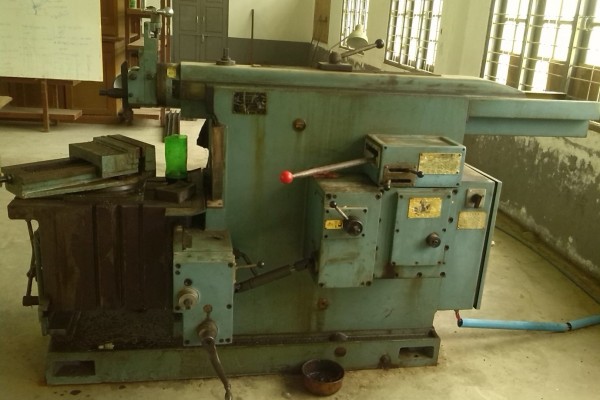Department of Airport Management
The Department of Airport Management is one of the outstanding departments in Myanmar Aerospace Engineering University (MAEU) which has been established through promulgation of State Peace and Development Council Law No.2/2002 on February 15. And the department was officially started functioning on January 6, 2014 with the purpose of fostering outstanding human resources with comprehensive skills and doing research in the context of airport management field to support future Myanmar aviation industry.
Diploma Offered
The Airport Management Department offers Post Graduate Diploma in Airport Management after the completion of nine-month course work continuously with three-month specific pilot project.
Research and Lab Facility
The Department of Airport Management is about to establish a simulation lab and preparing to do specific researches through student pilot projects.
Project Activities
The small-scaled model of Mandalay International Airport was built with the valuable contribution of the department members with the purpose of providing visual aid in teaching-learning environment.
Staff Profile
(1) Dr. Kyaw Moe Khaing : Associate Professor and Head
Academic Record:
- 1. A.G.T.I. (Civil), Mandalay Government Technical Institute (Myanmar),
- 2. B.E. (Aeronautical), Yangon Technological University (Myanmar),
- 2. B.E. (Aeronautical), Yangon Technological University (Myanmar),
- 4. Ph.D. (Aeronautical), Beijing University of Aeronautics and Astronautics (China)
Publications:
- 1. The Influence Analysis of Rainfalls on the Aerodynamic Characteristics of Aircraft (2009, June, Journal of Aeronautical Science and Technology, China)
- 2. Calculations of Aircraft Performance in the presence of Heavy Rain (2010, March, Journal of Flight Dynamics, China)
He is an associate professor and head of the department. His research will be focused on the future of Myanmar Aviation Industry. He is interested in developing quality management system and teaching-learning progressions. He currently involves in developing and implementation of initial quality management system and accreditation processes to support the bright future of the University and Myanmar Aerospace Industry.
(2) Dr. Su Myat Htwe : Associate Professor
Academic Record:
- 1. A.G.T.I. (EC), Monywa Government Technical Institute (Myanmar),
- 2. B.E. (Aeronautical), Yangon Technological University (Myanmar),
- 3. M.E. (Aeronautical), Yangon Technological University (Myanmar),
- 4. Ph.D. (Aeronautical), Yangon Technological University (Myanmar),
Publications:
- 1. Longitudinal Dynamic Behavior of Aircraft under Level Flight Condition (2010, Dec, Second International Conference on Science and Engineering (2nd ICSE))
(3) Dr. Winn Wah Wah Aye: Associate Professor
Academic Record:
- 1. A.G.T.I. (EP), Ayetharyar Government Technical Institute (Myanmar),
- 2. B.E. (Aeronautical), Yangon Technological University (Myanmar),
- 3. M.E. (Manufacturing), Beijing University of Aeronautics and Astronautics (China),
- 4. Ph.D. (Manufacturing), Beijing University of Aeronautics and Astronautics (China)
Publications:
- 1. Numerical Simulation of Transiting Part of Combustion Chamber (2010, Sept, Mechanical and Electrical Technology (ICMET))
(4) Dr. Yin Nwe Soe : Associate Professor
Academic Record:
- 1. A.G.T.I. (MP), Monywa Government Technical Institute (Myanmar),
- 2. B.E. (Aeronautical), Yangon Technological University (Myanmar),
- 3. M.E. (Aeronautical), Yangon Technological University (Myanmar),
- 4. Ph.D. (Aeronautical), Yangon Technological University (Myanmar),
Publications:
- 1. Investigation on Structural Performance of MAEU Small Plane under Aerodynamic Loadings, Journal of Aerospace Engineering, ICSE2009, Myanmar.
Research Interest:
- Aerodynamics of Aircraft
- Structural dynamics of Aircraft
- Airport landside/curbside design
- Airport Terminal design
- Airport Design and Management
- Airport Operations
- Airport Safety and Security
(5) Dr. Wai Wai San : Lecturer
Academic Record:
- 1. B.E. (Aeronautical), Yangon Technological University (Myanmar),
- 2. M.E. (Aeronautical), Yangon Technological University (Myanmar),
- 3. Ph.D. (Aerospace), Mandalay Technological University (Myanmar),
Publications:
- 1. International Student Summit 2012, ‘ International Student Networking toward Internationalization of Higher Education’, 11-13 , Nov 2012, Bogor, Indonesia
- 2. ‘Analysis of flow field characteristics at Convergent-divergent Nozzle by using Computational Fluid Dynamics’, Proceeding of the second international conference of Science and Engineering, 2-3 Dec 2010, Yangon, Myanmar
(6) Daw Zin Mar Aye : Department Staff
Academic Record:
- B.A (Geography), Meiktila University.


















